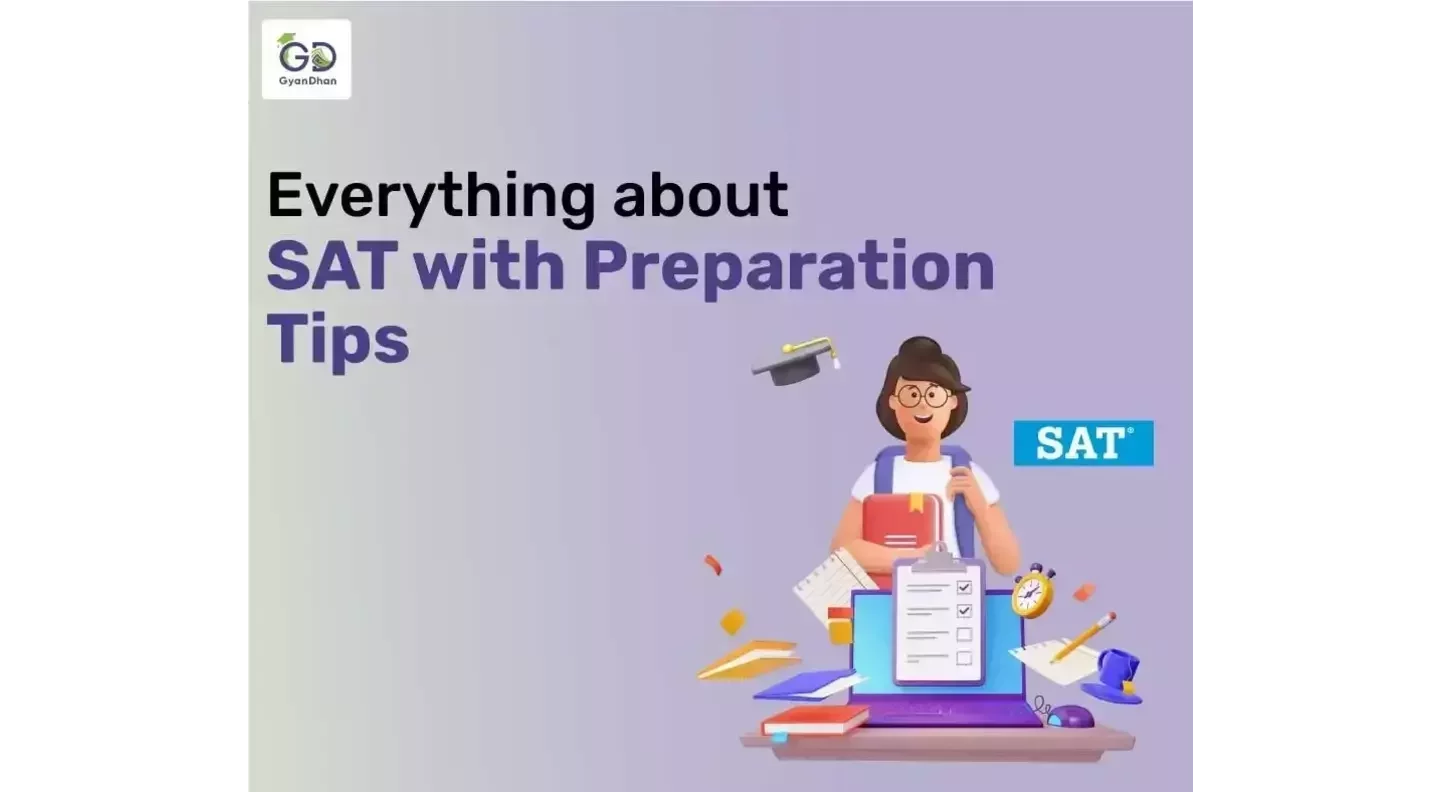Get instant loan offer suitable to your profile !


On this Page:
Understand the SAT exam format, scoring, and best preparation strategies. Get tips, resources, and expert guidance to excel in your SAT exam with ease
SAT stands for Scholastic Assessment Test, is a standard test conducted by the College Board. So to answer the questions, what is SAT exam? It is an exam that checks how ready students are for college by testing their skills in English and Mathematics skills. The total score ranges from 400 to 1600. Most colleges in the US and Canada use SAT scores to decide who gets admitted. In this article, we will see SAT examination details and all about SAT exam

The following are the reasons why you should consider taking the SAT:





| Aspect | SAT | ACT |
|---|---|---|
|
Total Duration |
2 hours and 14 minutes |
2 hours and 55 minutes |
|
Sections |
|
|
|
Optional Essay |
Discontinued after June 2021 |
Discontinued after June 2021 |
|
Test Format |
Fully digital and adaptive |
Fully digital and adaptive |
|
Calculator Policy |
Calculators allowed |
Calculators allowed |
|
Scoring Scale |
400 to 1600 |
1 to 36 |

Now, to further highlight the importance of the SAT, we have listed the top 10 US colleges that accept SAT scores:










Additionally, if you want to learn more about US universities, courses offered and other information, you can read and learn everything about top US universities on our website. Along with this, we have a data-backed tool that can predict your admission chances to top colleges and you can use it free of cost.

Earlier, the SAT (SAT test full form is Scholastic Aptitude Test) was paper paper-based test but as of 2024, it has become completely digital and the duration has also been shortened to around 2 hours and 14 minutes. Now let us see SAT examination details for 2025. The exam has two main sections:
The reading and writing section has the following important features:





The reading and writing section has the following important features:





Please note that the as per the latest SAT test format, optional Essay section has been removed.

Important Tip: There is a 10-minute break between the two sections. You can use it to clear up your mind and prepare for the next section. We recommend that when you practice a mock test, you take this 10-minute break to relax your mind for the next section and not to think about what happened in the previous section because what is done is done.

As per the latest SAT exam information, the scores are calculated in SAT as follows:





The following are some of the most common mistakes that students make while preparing for the SAT exam:






Now, we have seen the common mistakes, let us see crucial preparation tips that can make all the difference:







The SAT is your gateway to some of the best colleges in the world. With the right preparation and strategy, you can score well and boost your chances of admission. And if you are considering education loans for your studies in the US, then we have great news for you. With GyanDhan, you do not have to worry about education loans. See this video to learn more about

For the SAT exam in India, the total registration fee is approximately USD 130.98 (INR 11,123), which includes a USD 68 base fee, a USD 43 non-U.S. regional fee, and a USD 19.98 sales tax.
The SAT is conducted multiple times a year, typically in March, May, June, August, October, November, and December.
The digital SAT is approximately 2 hours and 14 minutes long.
The SAT has two main sections. The first section is Reading & Writing and the second section is Mathematics. Each section includes two modules. The test is now adaptive and fully digital.
A score of 1400 or above is considered excellent for top universities. However, a “good” score depends on the colleges you are applying to.
Check Your Education Loan Eligibility

Ask from a community of 10K+ peers, alumni and experts
Trending Blogs
Similar Blogs

Network with a community of curious students, just like you
Join our community to make connections, find answers and future roommates.. Join our CommunityCountry-Wise Loans
Best Lenders for Education Loan

ICICI Bank

Axis Bank

Union Bank

Prodigy

Auxilo

Credila

IDFC

InCred

MPower

Avanse

SBI

BOB

Poonawalla

Saraswat